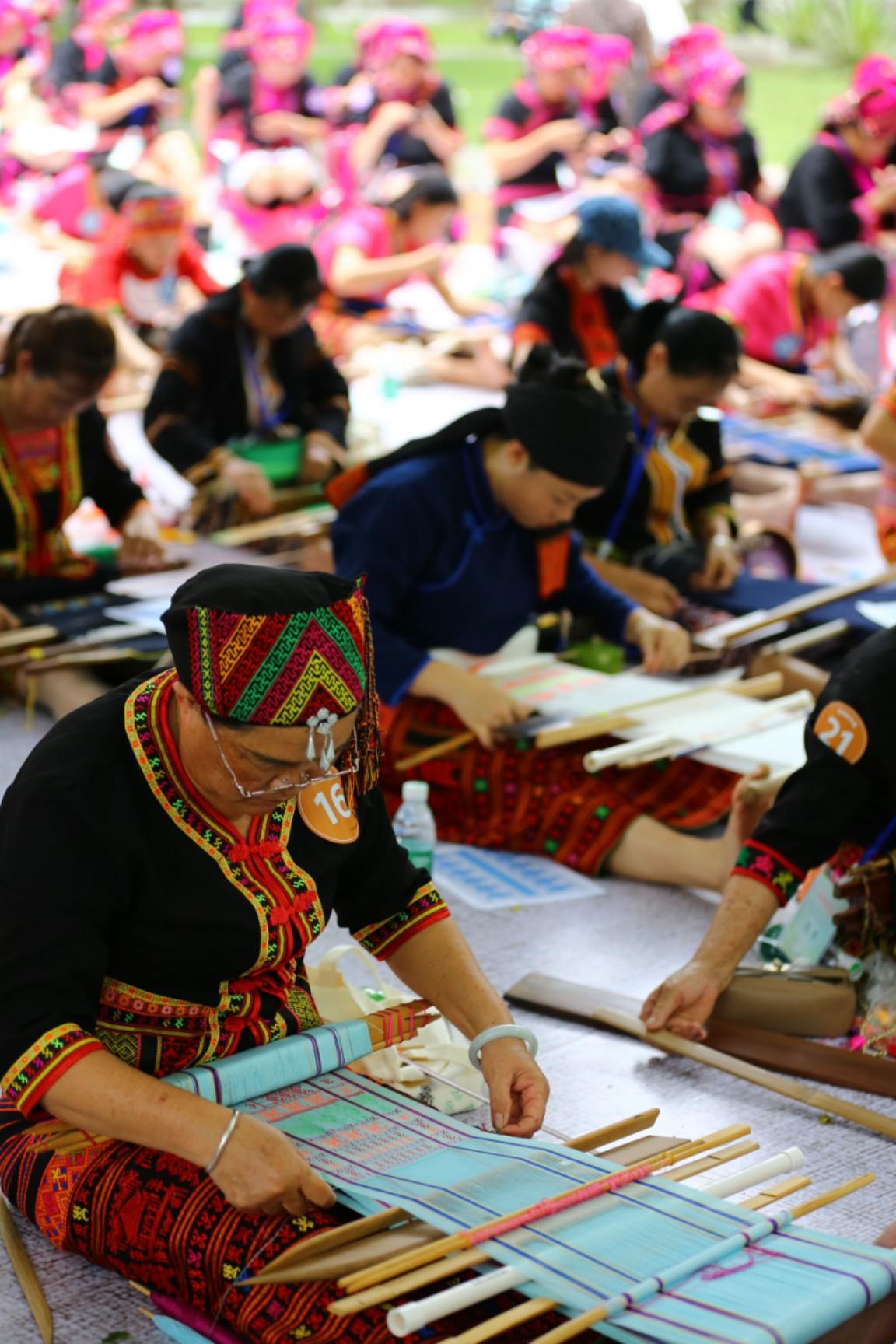Traditional Li textile techniques: spinning, dyeing, weaving and embroidering were added by UNESCO to its Representative List of Intangible Cultural Heritage of Humanity, according to the 19th session of the Intergovernmental Committee for the Safeguarding of Intangible Cultural Heritage held on Dec. 5. The techniques were included in the List of Intangible Cultural Heritage in Need of Urgent Safeguarding in 2009.
Tan Zhaoyan, who lives in Wuzhishan, south China's Hainan province was quite excited about the news. A Li textile techniques competition is held in Sanya, south China's Hainan province to celebrate the Shangsi Festival, also known as the Double Third Festival, an ancient Chinese festival celebrated on the third day of the third lunar month, April 9, 2024. (People's Daily Online/Chen Wenwu) The traditional textile techniques of spinning, dyeing, weaving and embroidering of the Li ethnic group refer to the traditional techniques adopted by Li women in Hainan province to make clothes and other articles of daily use with natural fibers such as cotton and flax.

Textile made with these techniques are known as "Li embroidery." Under the influence of her grandmother and mother, Tan, born in the 1990s, learned these techniques at a young age. However, her grandmother and mother would still be concerned sometimes about the declining interest among young people in learning these traditional skills.
Upon graduating from university, Tan found herself at a crossroads, torn betwee.

























